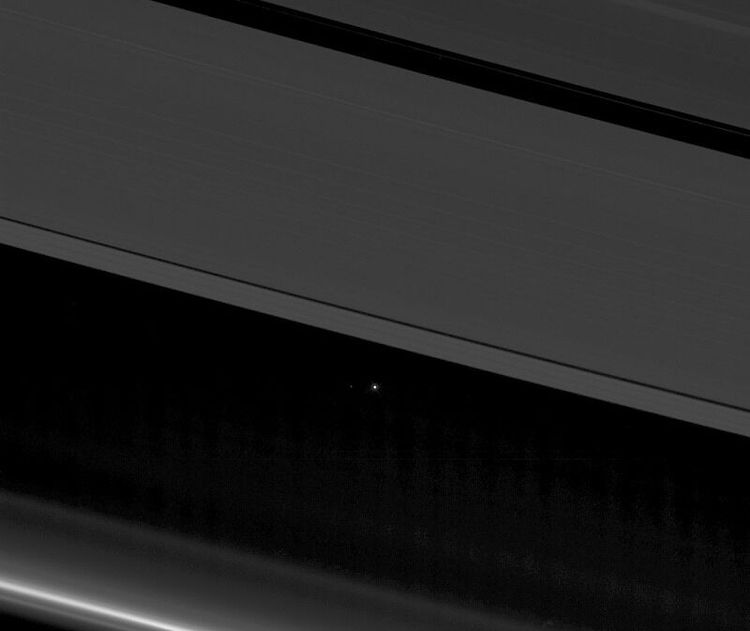
SATURN
SATURN
Saturn is most famous for its enormous and elaborate ring system. The planet appears tranquil, but in truth, the atmosphere is extremely turbulent, with winds reaching up to 1,800 kilometres per hour (1 thousand, 800 kilometres per hour), or 1,100 miles per hour (1 thousand, 100 miles per hour).

Saturn has many moons, varying greatly in size.
Image credit: Voyager 1, NASA.
Saturn has a persistent and mysterious hexagonal feature within the atmosphere surrounding the north-pole of the planet. The sides of the hexagon are about 13,800 kilometres (13 thousand, 800 kilometres), or 8,600 miles (8 thousand, 600 miles) long, which is greater than Earth's diameter. The hexagon rotates with the planet, as it spins on its axis.
Image credit: Cassini, ASI/ESA/NASA.

Saturn facts
Diameter: 120,536 kilometres (120 thousand, 536 kilometres), or 74,896 miles (74 thousand 896 miles)
Distance from the Sun: 1,429,000,000 kilometres (1 billion, 429 million kilometres), or 888,000,000 miles (888 million miles)
Rotation period (day): 10.7 Earth hours
Orbital period (year): 29.4571 Earth years or 10,759.22 Earth days or 24,491.07 Saturnian days
Ring Span: 282,000 kilometres (282 thousand kilometres), or 175,000 miles (175 thousand miles)
Moons: 62 in total, namely, S/2009 S 1, Pan, Daphnis, Atlas, Prometheus, Pandora, Epimetheus, Janus, Aegaeon, Mimas, Methone, Anthe, Pallene, Enceladus, Tethys, Telesto, Calypso, Dione, Helene, Polydeuces, Rhea, Titan, Hyperion, Iapetus, Kiviuq, Ijiraq, Phoebe, Paaliaq, Skathi, Albiorix, S/2007 S 2, Bebhionn, Erriapus, Skoll, Siarnaq, Tarqeq, S/2004 S 13, Greip, Hyrrokkin, Jarnsaxa, Tarvos, Mundilfiri, S/2006 S 1, S/2004 S 17, Bergelmir, Narvi, Suttungr, Hati, S/2004 S 12, Farbauti, Thrymr, Aegir, S/2007 S 3, Bestla, S/2004 S 7, S/2006 S 3, Fenrir, Surtur, Kari, Ymir, Loge and Fornjot.

A slice of Saturn's ring system, showing distances from the centre of Saturn, of the various rings, gaps and divisions.
Image credit: Cassini; ASI/ESA/NASA.

Pan is an odd walnut-shaped moon. It is a shepherd-moon within the Encke Gap in Saturn's A Ring. It keeps the gap free of ring particles, and seems to have accumulated such particles around its own perimeter, giving the moon its unusual shape.
Image credit: Cassini, ASI/ESA/NASA

Shepherd-moons, like Daphnis, pull gravitationally on the particles within the rings of Saturn, creating spectacular wave patterns.
Image credit: Cassini, ASI/ESA/NASA.

Earth and the Moon, as seen between Saturn's rings.
Image credit: Cassini, ASI/ESA/NASA.
